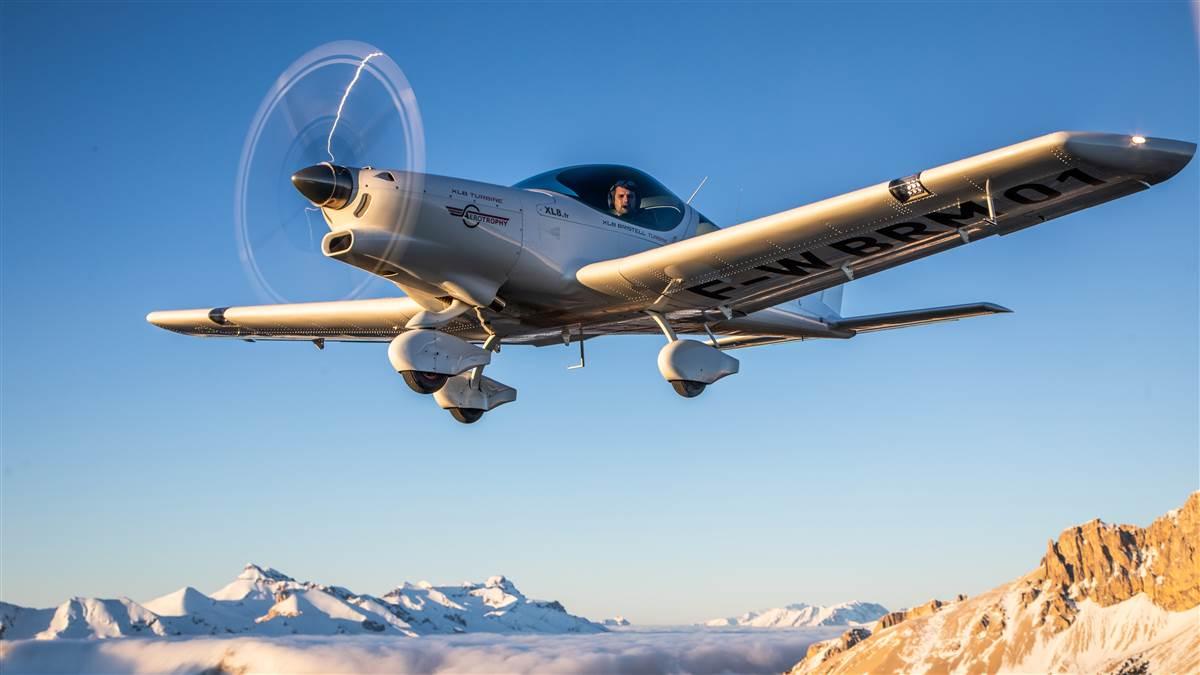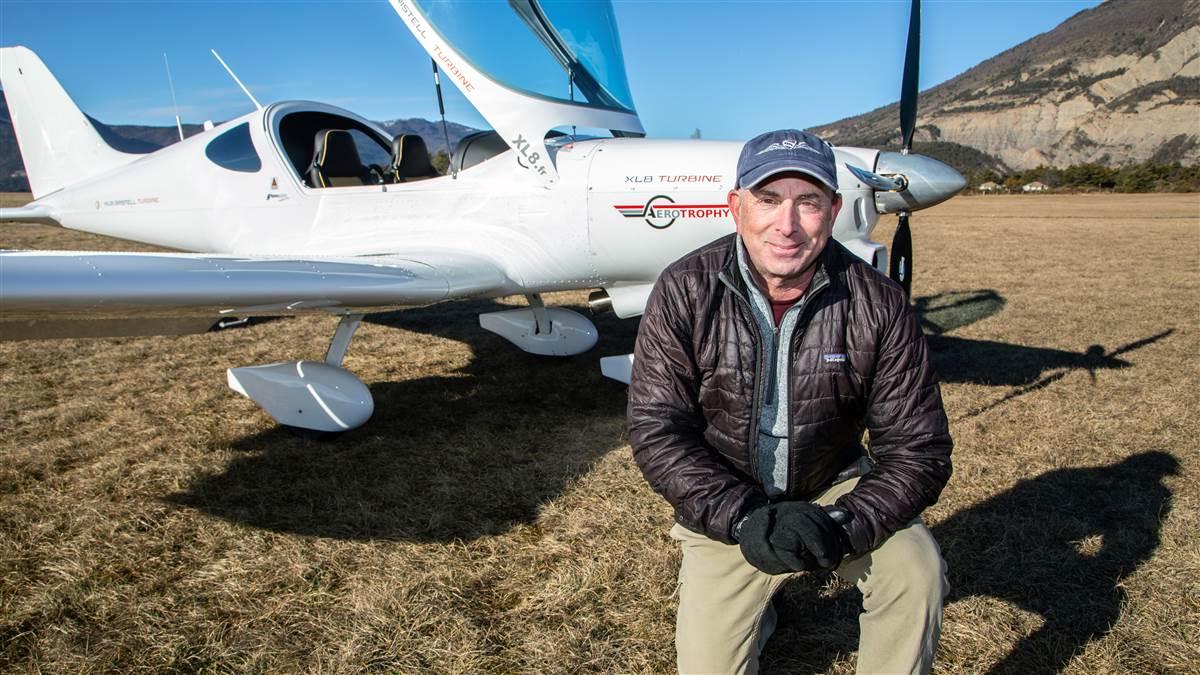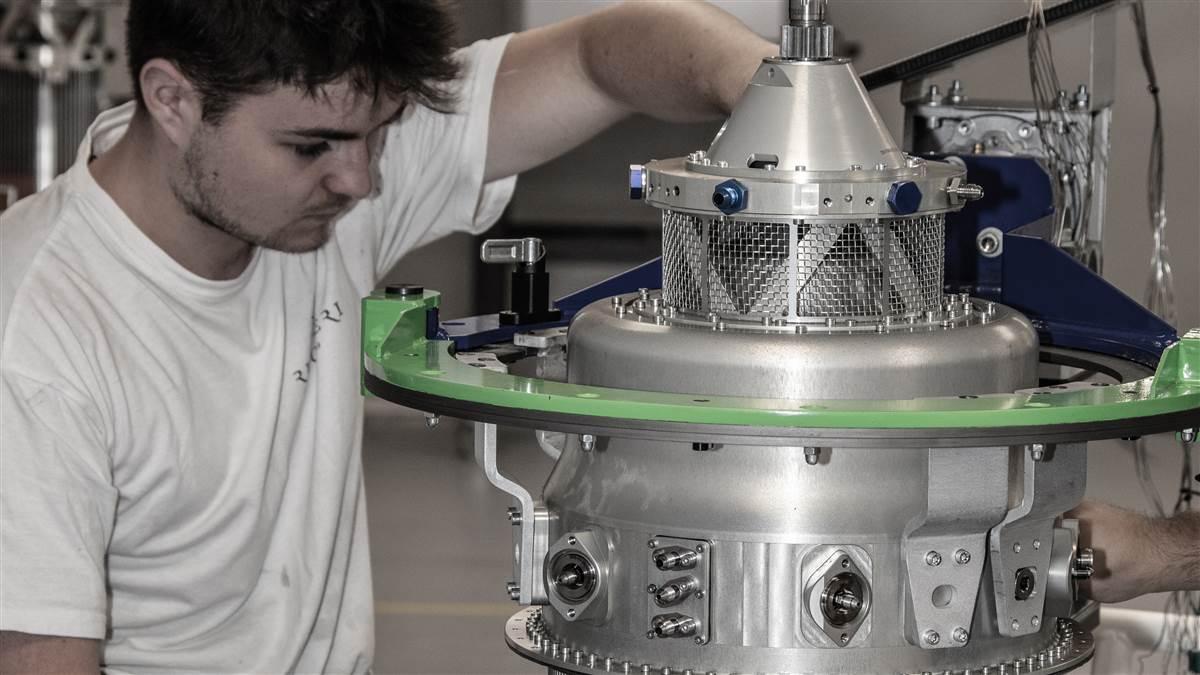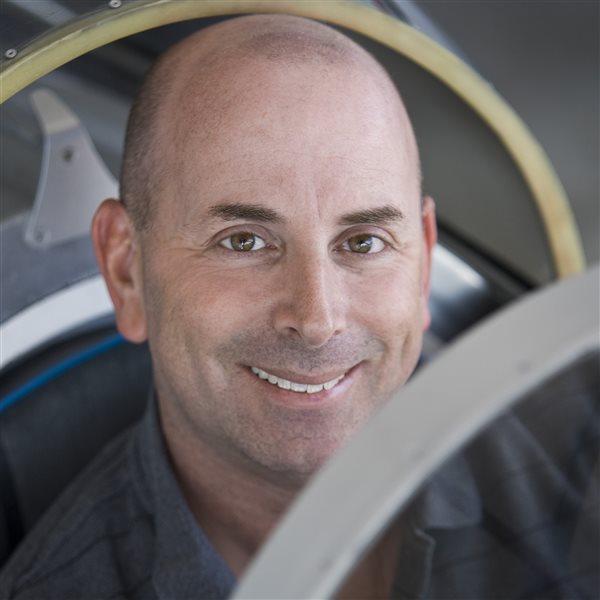French revolution
A fuel-efficient turboprop for GA

The view ahead is familiar enough. I’m in the left seat of a Bristell XL8, a modern two-seat, metal, light sport aircraft, and aligned with a paved runway for takeoff. Every general aviation pilot knows this scenario well.
The sounds are well known, too. There’s an unmistakable turboprop growl as a constant-speed propeller shifts into flat pitch while taxiing, a smooth hum at idle, and a slightly delayed surge a few seconds into the takeoff roll as the prop blades move to higher pitch and both engine and prop rpm rise to 100 percent.
Yet this novel marriage of a light sport airplane and a modern “regenerative” turboprop engine is so odd that it’s hard to believe it’s real—even as the smooth acceleration pushes me against the seat back while airspeed rapidly increases through rotation speed and beyond. Everyone knows turboprops are meant for larger airplanes—Cessna Caravans, Pilatus PC–12s, Beechcraft King Airs, and the like—so this combination is unsettlingly weird.
 Light back-pressure on the control stick lifts the nosewheel off the pavement and I raise the nose into the cold morning air. I aim for the airplane’s best-climb speed of 70 knots but the 10-degree nose-up attitude I initially set isn’t nearly aggressive enough.
Light back-pressure on the control stick lifts the nosewheel off the pavement and I raise the nose into the cold morning air. I aim for the airplane’s best-climb speed of 70 knots but the 10-degree nose-up attitude I initially set isn’t nearly aggressive enough.
I raise it to 15 degrees and that’s closer, but still not quite enough for the 141-horsepower, Jet-A-burning engine (which can also use avgas, autofuel, or liquid hydrogen) and the still and dry outside air. Finally, a 17-degree nose-up pitch attitude captures the desired climb speed and holds it as Jean-Marie Urlacher, my guide on this flight and host in the historical mountain town of Gap in the southeast corner of France, provides good-humored and heavily accented encouragement.
“The Bristell factory recommends taking off with partial flaps,” says Urlacher, who has logged more than 200 flight hours in the turboprop-equipped Bristell at this fair-weather location in late 2024 and early 2025. “But the turboprop blows through the maximum flap deployment speed so quickly that I make it my policy to take off with a clean wing to avoid that limitation.”
We climb continuously to 11,500 feet and fuel consumption is roughly 10 gallons per hour at 100-percent power during the maximum-effort climb. Fuel flow drops to about 7 gallons per hour at 75-percent power during high cruise, 5.5 gallons an hour at 65-percent cruise, and 4 gallons an hour during long-endurance cruise at 50 percent power. (Airspeeds and fuel consumption are nearly identical to book values for the same airframe with a 141-horsepower Rotax 915 iSC turbocharged piston engine.)
The four-blade, composite propeller turns about 2,000 rpm in cruise and that keeps the Bristell XL8 cockpit extraordinarily quiet.“This engine is a game-changer.” —Jean-Marie Urlacher
A single-power lever connected to a dual-channel full-authority digital engine control (FADEC) system sets prop pitch and rpm. There’s no condition lever to shift between flight and ground idle positions. The computer does that automatically.
 The FADEC also handles the engine start and shutdown sequences and protects the engine from hot starts or over-boosting. To start the engine, the pilot simply confirms battery power of 25 volts or more, pushes and holds the green Start button, and lets the engine do the rest. Shutting down the engine happens via the red Stop button.
The FADEC also handles the engine start and shutdown sequences and protects the engine from hot starts or over-boosting. To start the engine, the pilot simply confirms battery power of 25 volts or more, pushes and holds the green Start button, and lets the engine do the rest. Shutting down the engine happens via the red Stop button.
We shut down and restart the engine in flight just to confirm it can be easily done. Then we set up a plunging approach to Gap at idle power despite a sub-freezing outside air temperature, and the engine doesn’t seem to mind these actions which would constitute cruel and abusive treatment for any piston engine.
Throughout the demonstration flight and several subsequent cross-country trips to remote and rugged airfields throughout the region, the turboprop runs smoothly and precisely with confidence-inspiring obedience and predictability. The biggest difference between this baby turboprop and its more powerful predecessors is the regenerative model’s piston-like fuel efficiency. Other small turbines have been converted to turboprops in the past—but they typically consume at least twice as much fuel as similar-sized piston engines. This one uses roughly the same amount, or roughly 0.06 gallons of fuel per horsepower.
“This engine is a game-changer,” says Urlacher, who also flies turbine-powered life flight helicopters throughout this picturesque region ("Portfolio: Jean-Marie Urlacher," January 2025 AOPA Pilot). “The implications for flight training, for new aircraft manufacturing, and for retrofits are enormous. The most exciting aspect is that we’re only at the very beginning of that process.”

Turbotech
The inspiration behind this engine is a partnership between two engineers, Damien Fauvet and Jean-Michel Guimbard, who worked together at Safran, a French jet engine consortium, before starting their own company, Turbotech, nine years ago.
Fauvet, 45, is a general aviation pilot and says he’s long sought to combine his academic and professional knowledge of turbine engines with his passion for GA.
Turboprops have always been lighter, more powerful, more reliable, and required less frequent maintenance than piston aircraft engines—but they also burned far more fuel per horsepower and their heat-treated components made them much more expensive to produce. Turbotech’s solution to the turboprop’s fuel efficiency problem is a patented heat exchanger that captures heat produced during combustion and repurposes it. Pushing already heated air through the combustion chamber dramatically reduces fuel consumption so that the company’s 141-horsepower R90 turboprop uses about the same quantity of fuel per hour as a similarly sized piston engine.
Regenerative turboprops have long been used to improve the fuel efficiency of ships and heavy vehicles like military tanks, but that technology is far too heavy for aviation use. Turbotech’s heat exchanger weighs about 50 pounds (making the engine’s total weight similar to a 160-horsepower Rotax 916 iS) and consists of about 4,400 spaghetti-like metal tubes encased in a metal shroud. The tubes send compressed outside air through the shroud. As air gets pushed through the tubes surrounded by hot exhaust, the air temperature inside the tubes rises rapidly. That hot air is then delivered to the engine’s combustion chamber where it’s mixed with jet fuel and ignited to produce the heat and energy for propulsion.
A gear reduction drive at the front of the engine limits the propeller to a maximum 2,300 rpm, an optimal value for GA aircraft propellers to produce thrust. Turbotech has been testing several multi-blade propeller models for aircraft performance and noise reduction.



Future
Fauvet first showed his prototype regenerative heat exchanger to colleagues at Safran almost a decade ago, and they were so impressed the company provided $2 million in seed money to launch Turbotech as an independent firm.
Turbotech has taken a deliberate approach to product development since then. The company has 20 full-time employees, and its turboprop engines are flying today in European ultralight aircraft including Bristell, JMB, and GoGetAir, as well as two helicopters. The Bristell has logged the most flight time with about 300 flight hours in late January 2025.
Turbotech also has developed an 85-kilowatt (109-horsepower) hybrid engine with its R90 turboprop at the core, and the hybrid engine is being tested on multiple experimental eVTOL aircraft. Several U.S. manufacturers of both FAA-certified and experimental-category aircraft have also visited Turbotech in recent months to evaluate the company and its products.
Fauvet said Turbotech is pursuing European certification through the European Union Aviation Safety Agency (EASA) and plans to seek FAA approval afterward. Beyond that, Turbotech plans to produce at least two more families of engines between 250 and 400 horsepower. For now, however, the company is focused on gaining real-world experience through the European ultralight category. Turbotech is seeking a 3,000-hour time between overhauls from EASA in its initial certification and company officials say they anticipate that number could go up to 4,000 hours based on their own internal testing.The seductive qualities of a smooth, reliable, efficient engine are powerful.Fauvet says Turbotech expects to deliver about 50 R90 engines in 2025, and the company has enough capacity at its existing facility to produce up to 500 annually. The current retail price of the 141-horsepower engine is about $100,000. Turbotech only sells to other aviation businesses and not to individual buyers.
Fauvet said the company is cash-flow positive with about $3 million a year in revenue. He said the U.S. GA market is key to the company’s future growth. Turbotech plans to establish five or six U.S. dealerships to sell its engines and provide replacement parts and technical support.

Turbotech’s R90 engine is less expensive—even on a per-horsepower basis—than existing turboprops which tend also to be much more powerful and are supported by large, international firms. Turbotech’s engine is significantly more expensive than piston engines produced by Lycoming, Continental, and Rotax that produce about the same horsepower. But the seductive qualities of a smooth, reliable, efficient, and long-lasting turboprop engine are powerful to a variety of potential aviation customers.
Flight schools will be drawn to them because, on paper at least, they require less frequent maintenance—and that means more flying, fewer overhauls, and less waiting for hard-to-get parts. Students who learn to fly or get advanced ratings in turboprops also can gain a meaningful employment advantage because—like military pilots—they’ll graduate with a significant amount of turbine time in their logbooks.
For GA pilots who can afford them, the Modernization of Special Airworthiness Certification (MOSAIC) regulations on the near horizon are highly permissive in terms of the kinds of engines that will be allowed in light sport aircraft. And a small turboprop like the R90 is likely to appear on a whole new category of sleek, high-performing turboprops available to U.S. sport pilots.

European manufacturers including JMB and Tarragon already have two-seat, retractable models using Turbotech engines, and they anticipate delivering exceptional speed, high-altitude, and long-range capabilities just as their turbocharged piston-engine models already do. Designers of backcountry and adventure airplanes are sure to follow, especially overseas where avgas is wildly expensive or unattainable.
Turbotech is a small company and even if it succeeds in gaining regulatory certification, it doesn’t have the production capacity to rapidly reconstitute the legacy GA fleet. But existing GA manufacturers and retrofit shops are taking notice of both Turbotech and the idea of fuel-efficient turboprop engines—and that seems like a tremendously positive step.
“It’s taken us years to get to this point,” Fauvet said, “but we’re finally making the engine I always wanted to have [as a GA pilot]. Building and certifying a new engine isn’t easy, and it’s even more difficult when you’re using a new technology. There are many technical obstacles to overcome; the regulatory environment is difficult; there are funding requirements, and the whole process takes a huge amount of focus and energy.
“We’re the challenger,” he said. “We’re finally going to have our chance—and we’re prepared for it.” 



